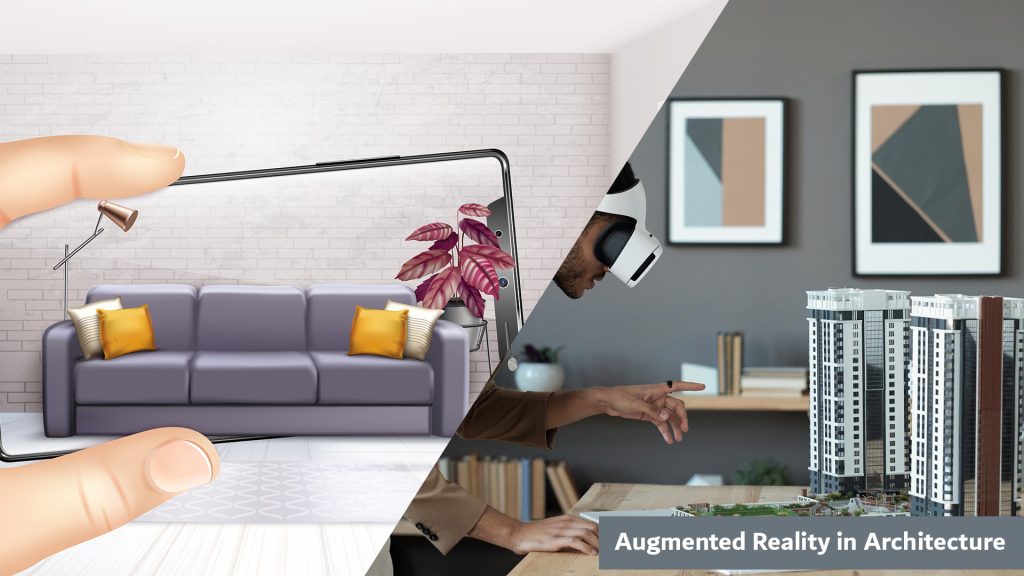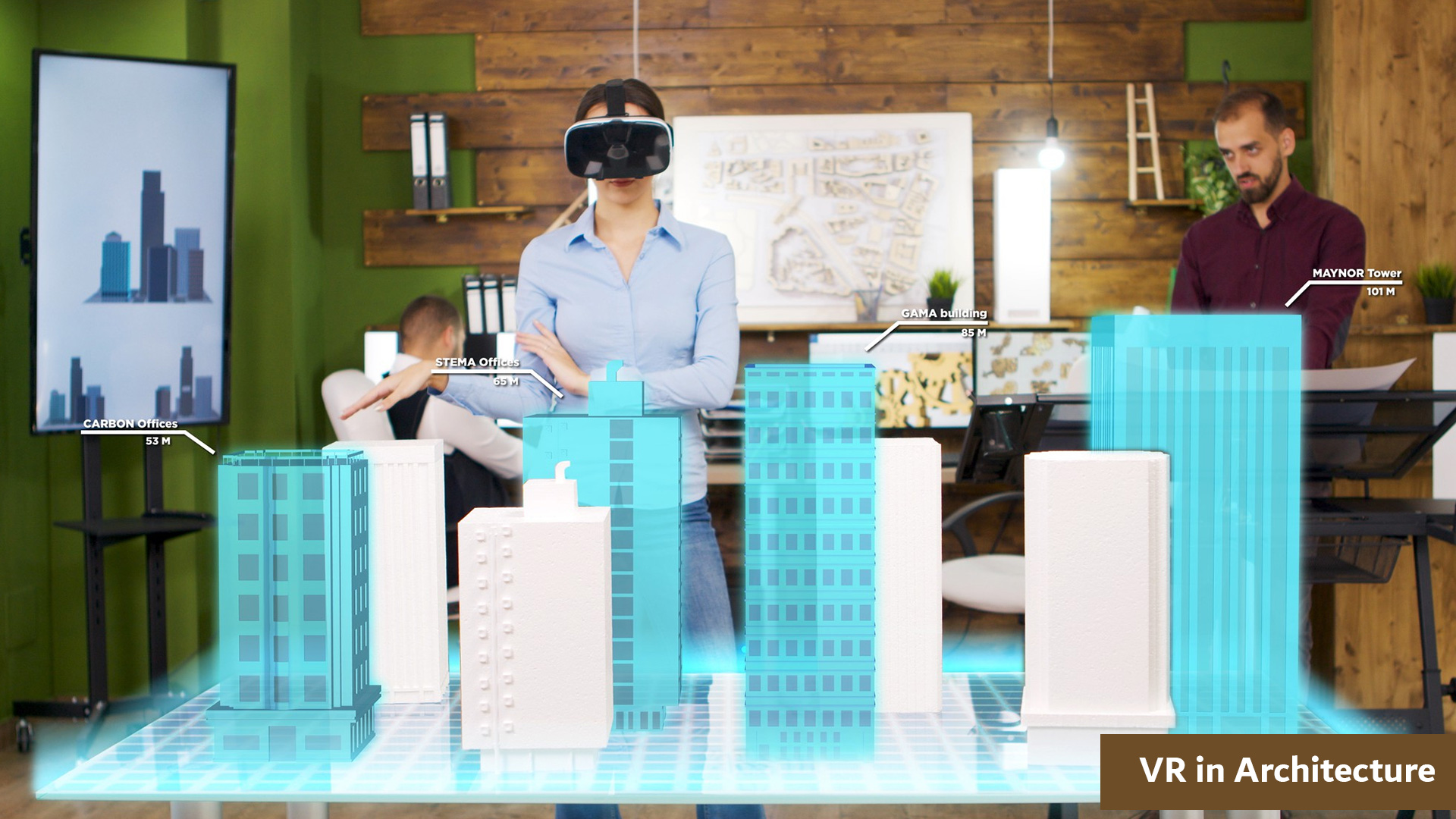Augmented reality in architecture sounds new and exciting. It is a visual layer on the physical environment to see how architectural models will appear. With the applications of augmented reality industries benefits exponentially.
Augmented Reality in Architecture
What is Augmented Reality – Augmented Reality or AR is a technology that combines with the real world to make another environment scene. AR is available on smartphones, and tablets. With the use of a device camera and some 3d objects, individuals can experience the blend of 3d objects and the real world.
In simple terms, Augmented reality technology combines digital information with what is present around you. Basically, if you can see something around you, AR lets you add digital data or graphics to it.
This is a remarkable experience that makes things better, more impressive and communicative. And that is why we call it augmented reality.
Usage of AR in the Architecture Industry
AR technology has made striking changes to the construction industry. Wondering how Augmented Reality is used in Architecture? This tool helps designers and clients see how construction elements will fit together to their site. This becomes possible when they add some 3d objects such as three-dimensional buildings, interior elements, outdoor elements, and world scenes. Let us read about how it enhances the project planning and design in construction projects.
- AR in designing Enhanced and Smart Project planning
With Augmented Reality technology used by architects, they plan projects with a better perspective. It enables them to examine how some elements will appear in the present environment. This helps in making further decisions that can give decent real-life settings.
- Accurate Measurements and Project Scaling with Architectural AR
With advanced AR tools in architecture, we can easily measure physical elements and relate them to the fittings. AR cutting-edge software suggests the best suitable options along with product measurements. In this way, AR in architecture brings surgical and mathematical precision, making procedures easier and smarter for us all.
- Easy Materials, Colors, And Design Selection in Architectural Projects
AR allows you to look deeper into the project. It is in your hands what to add, and what to remove. We have control of picking desired materials, colours, designs, finishing structure etc. AR gears up the appearance of structures by giving us command of customizing elements.
- Project Revisions On-Site with Augmented Reality in Architecture Projects
Augmented Reality allows us to make necessary changes before it is too late. When you have the physical world around you and project elements in software, you decide what to keep, change or remove. With it, designers keep track of the drafts and projects are on track.
- Safety and Health Measures in Workplace
Augmented Reality makes architecture workplaces safer. It puts safety rules directly on the physical space, helping with understanding and training. AR also helps navigate on-site, gives remote help, and makes safety info available right away. The technology lets us check safety in real time and ensures everyone follows the rules. Thus, it is creating a safety-first culture.
In this way, AR in architecture helps in easy interior/ exterior designing, identification flaws, quick modifications and in ensuring proper site safety.
Benefits of AR in Architecture
The topmost benefit of augmented reality technology in the construction industry is not only for designers but also for customers. Both parties can see the project undergoing with a vision of how it would look with different structures, objects and elements.
Unlike 2d drawings, AR allows to insertion of digital structures into the physical environment to interact better with the building. This process improves project outcomes, team collaboration, and the planning process. Since all stakeholders are involved, they can together view the construction site and develop better ideas.
Besides, architectural buildings with AR are practically built allowing us to make fewer errors, design mistakes, and possible failures. This ends up saving time, and money and making greater profits.
AR makes the architectural project process faster. Look at the following points for understanding better.
- Efficient Measurements of Physical Elements with AR.
AR streamlines the process of measuring physical elements. It makes it quicker and more precise. This feature not only saves time but also contributes to the accurate planning and execution of architectural projects.
- Faster Safety Checks and Quick Mistake Spotting with Augmented Reality.
In Architecture, using Augmented Reality makes safety inspections quicker, helping architects and designers check things faster on time. Also, this approach reduces problems, improves project quality, and makes the whole process work better.
A Look into the Future of AR in Architecture and Construction Industries
Though nobody can predict the certainty of AR in the construction and architectural field, there are possibilities considered by great architects and computer scientists. They say that more applications will be developed to improve safety and detect any hazard or risk at construction sites. The cooperation of rendering experts and architects will be flourished. All parties will come up together for better 3d render solutions backed by augmented reality.
- AR will change how designs are seen, letting architects and clients experience virtual structures in real life.
- Architects will work together better with collaborative augmented spaces for improved communication.
- Construction processes will be smoother as AR integrates with Building Information Modeling to provide more accurate and real data.
- AR will make on-site safety, training, and maintenance more effective for improving the way work is done.
- The evolving AR technology can completely change how architects think and create their designs.
The Bottom Line
Augmented Reality in Architecture Engineering is an important technology. With this, we can implement productive construction solutions to bring better business outcomes. It is a very useful tool for architects for ideal designs, providing adjustments and deep understanding along with real settings. AR allows clients to immerse in the digital world while staying present in their own environment making them contented about the project. Make sure to adapt to this technology not only reaching ahead but helping the world better with safe and sound architectures.
FAQs
How is augmented reality used in architecture?
Augmented reality in architecture is very useful technology that help investors, contractors, advertisement industries, and buyers to understand project at a better level. It helps them to add elements to project how specific additions will look in real-life settings.
How does AR works in construction?
There are many software and hardware used by developers, designers and architectures to create a computer vision for consider the structure better.
How does AR improves the project quality in construction industry?
AR technology when used on-site improve accuracy, predictability, and efficiency. It allows overlaying imaginary elements to existing physical environment that helps builder bringing the best possible outcome.








